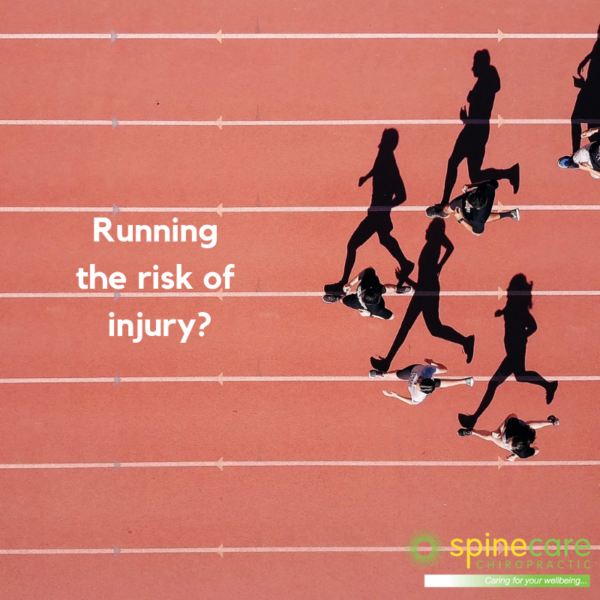Are you in one of these three high-risk injury groups?

If slapstick comedy has taught us anything, it’s that slipping on a banana peel can have serious consequences. Accidents happen. Life is risky.
But for athletes and people who love sport, there’s a greater chance you might hurt yourself; especially if you’re in one of the below categories.
Kids & adolescents
Kids and young people are active, competitive and generally more gung-ho than their older counterparts.
Not only that, but their bodies are not smaller versions of grown-ups. In fact, they have some very specific anatomical differences which predispose them to injury.
Their bones, muscles, tendons and ligaments are still growing, and what might tear an adult’s muscle could break a child’s bone.
Growth plates – or epiphyseal plates – are areas of developing tissue near the end of long bones in kids and adolescents. These weaker spots are prime injury territory – as well as the surrounding ligaments and tissues.
Often, kids vary dramatically within their age groups in physical stature and ability. And yet, athletic and sporting cohorts are usually age-based, meaning children come up against a lot of bigger and smaller bodies. This can lead to on-field mishaps.
To top it off, damage done in this crucial developmental stage may have lifelong consequences; setting the stage for medical problems down the line.
Women
The jury is still out on why women are more prone to sporting injuries than men, but it’s a fact reflected in the stats.
Women are many times more likely to suffer an ACL tear than men, and have higher injury rates across most sports.
Some theories for this include: fluctuating hormone levels (estrogen makes muscles and ligaments ‘stretchier’), less aggressive training techniques yet increasingly rough play on the field, structural differences in knee, thigh and general anatomy, differences in footwear, and loss of bone mass that can accompany restrictive diets or exercise-induced amenorrhea (loss of menstrual cycle).
It’s certainly not a case of ‘the weaker sex’, and most likely a combination of various factors which can be remedied with increased awareness and specialised training.
Adult athletes
Adult athletes are, for obvious reasons, a high risk group when it comes to sporting injuries. Sheer time spent on the field, coupled with rigorous training regimes and a competitive spirit regularly results in injury.
So, what can you do to minimise the chance of getting hurt on the field?
For kids
→ Cultivate body awareness in children by asking them to check in with how their feet, legs, arms, neck, etc feel and finding words to describe it – i.e tight, achey, strong, tired, sharp. Encourage kids to listen to their body and rest if they’re not feeling 100%.
→ Never push children to play sports above their ability level (or interest!).
→ Seek out sports in which your kids can play with others their own size and fitness level, rather than simply by age.
→ Always encourage kids to keep hydrated and properly nourished – on and off the field.
→ Look for certified trainers or exercise practitioners, able to attend to any injuries that may arise.
→ Never tell a child to ‘push through the pain’. No one should play sport while injured.
→ Have them wear protective gear wherever possible.
→ Encourage warm ups (at least 5 minutes) and cool downs.
→ Get regular chiropractic assessments and adjustments, helping to maintain alignment, correct posture and a healthy nervous system.
For women
→ Avoid restrictive diets or overtraining that results in loss of menstruation. This can lead to bone loss and a higher risk of injury and fractures.
→ Focus on strength, not just cardiovascular fitness. Resistance training (with correct form) is vital for building strength and supporting joints, yet is still seen as a more ‘masculine’ activity. Women: permission to lift!
→ Be aware of posture and how you’re sitting at work – i.e legs crossed. Refer to our correct posture guidelines, and be sure to change sitting position regularly.
For everyone
→ Tune into your body! Don’t push yourself when feeling weary, ignore pain, or go too hard too fast.
→ Take warm-ups, cool downs and dynamic stretching seriously. Make it part of your athletic routine.
→ Cross train. Engage in yoga, strength training, swimming… a diverse set of strength and fitness-building activities that will help you avoid overtraining and muscle imbalances.
→ Don’t neglect nutrition and hydration. Tissues need water to function effectively, and dehydration is a serious risk factor of muscle and ligament tears. Nutrition, too, supports a healthy, flexible and strong body – building resilience from the cells, up. See some of our recommendations if you’re stuck.
→ Seek regular chiropractic care, ensuring your spine is aligned and free from interference.

